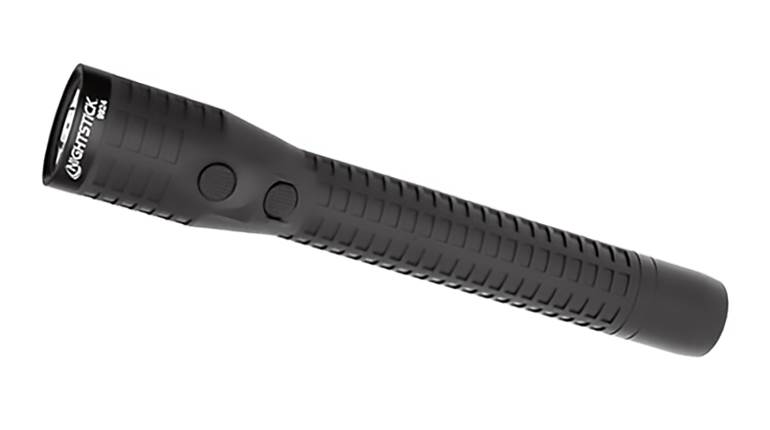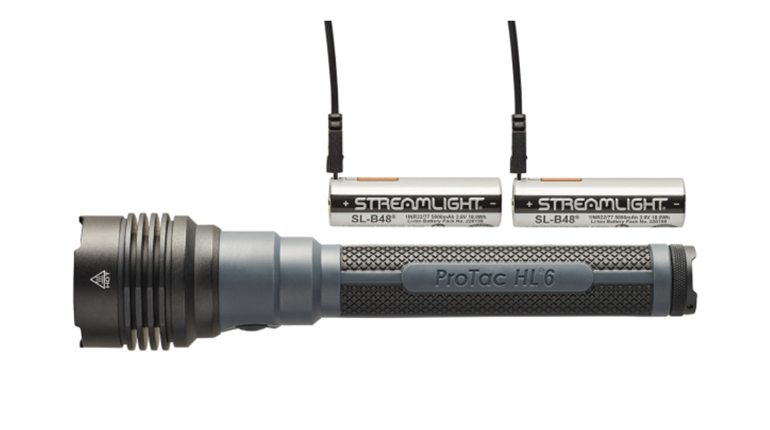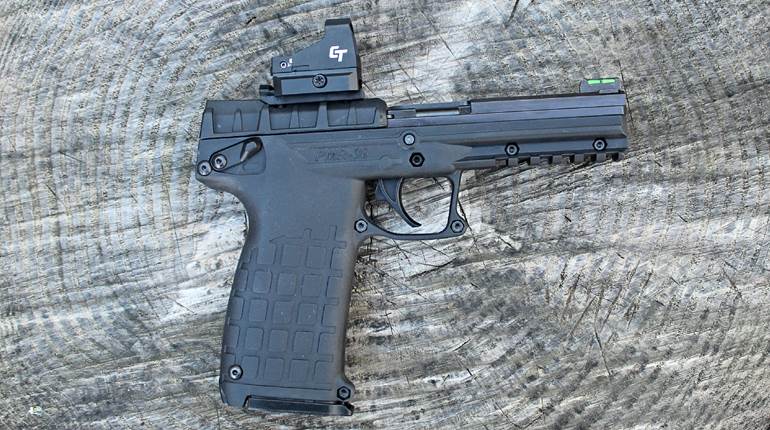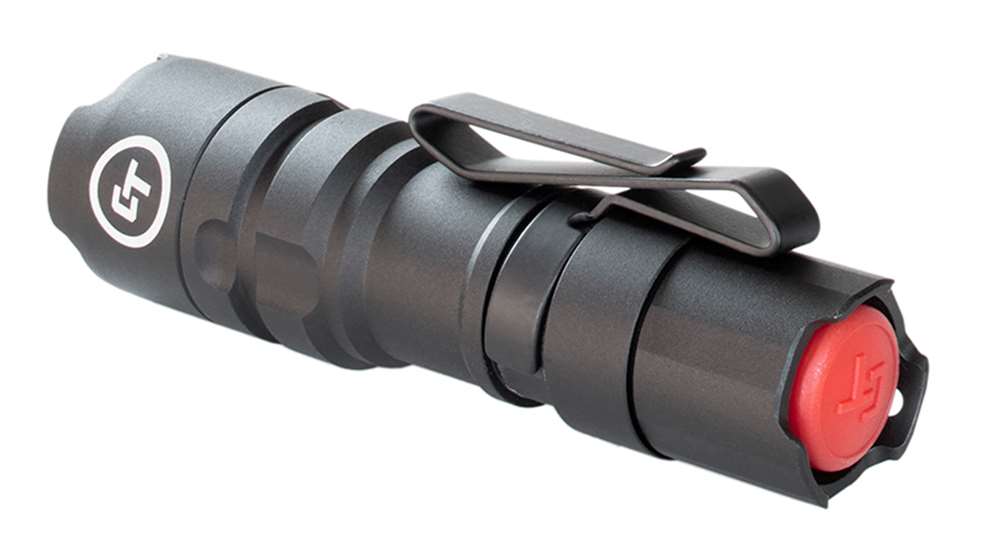
The Crimson Trace CWL-300 handheld tactical flashlight provides uncluttered performance in a small and reliable package, one that’s rugged enough to survive and thrive when the unthinkable happens—whether it’s an armed home invader or hurricane pounding down the door. It won’t earn headlines for “cutting edge” features, but generous output and intuitive activation make it ideal for gun owners looking for a lightweight everyday carry option and families adding to their kit during National Preparedness Month (September).
For the past 25 years Crimson Trace has specialized in making the kind of laser-aiming and lighting systems firearm owners trust. The CWL-300 holds true to the same self-defense mission, but it packs the features even non-gun owners should find hard to ignore.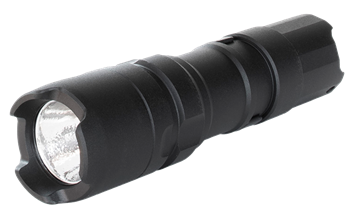
1. Construction
Flashlights get abused. They’re dropped from tables, roofs, ladders, decks, trunks and the even the mitts of sure-handed infielders. When not in use they’re buried under tools in a trunk or heavy gear in an emergency bag. Inferior polymer housings routinely crack and surrender to the stress. Discover the problem hours before a Cat 4 storm hits and you’re not going to find many replacement battery-powered light sources left on the shelves. And if you drop that dime-store bargain when getting up to find the source of that “bump in the night,” the encounter may be a dark one.
Machined aluminum construction minimizes the problem with the CWL-300. It’s impact-resistant to one meter, built to last and comes with a one-year limited warranty.
Sheltering the single on-off switch at the tailcap are three elevated sections that rise above its surface, minimizing the chances of inadvertent activation during storage (and unwanted dead battery) or damage. The same “wingdam” approach is employed up front, protecting the lens and LED below from unwanted bumps and bruises. The protection, which amounts to 180-degrees of the circles, is flat on both ends, allowing the flashlight to stage vertically, with the light source either up or down.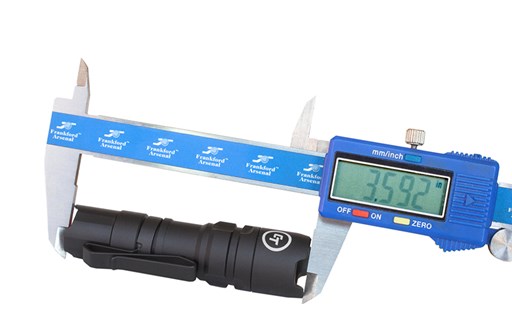
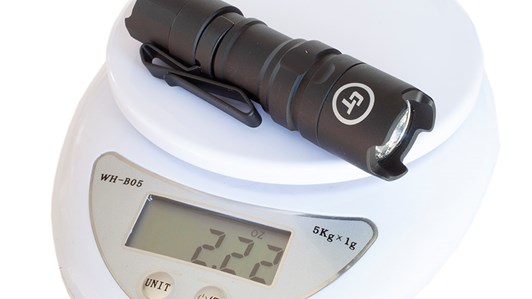
It measures only 3.6" in length, and 0.96" at its bezel (the widest). Measured total weight with battery is 2.22 ozs. The tailcap has a small hole for lanyard insertion and it comes with a removable pocket clip.
2. Illumination
The CWL-300 provides user-selectable outputs of either 200 or 50 lumens from its Cree XP-L LED. At high power it’s very bright, although not blindingly overwhelming. Too much can be a drawback for home defense and a headache for a family huddled in a room waiting for the power to come back on. It’s more than enough for home or on the road, although this isn’t the light you need if you’re illuminating a 747’s runway.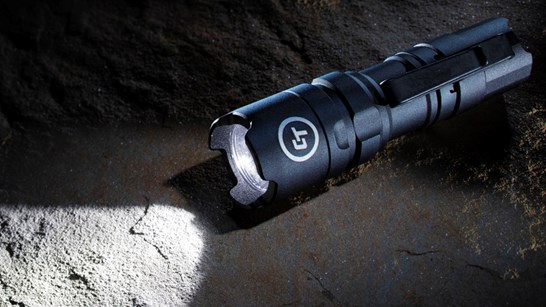
The LED is an interesting story. This version is one of Cree’s high-performance chips and there are a lot of flashlights using low-quality knock offs that do not have the same power, lifespan or energy efficiency. There’s another reason to look for genuine Cree. It’s a U.S. based company founded in Durham, N.C., in 1987. It’s still based in the Research Triangle.
3. Battery
A single CR123 battery provides the power, and the unit ships with one. You may not need to replace it for a while, though. Rated longevity at the full 200 lumens is two hours. At the 50-lumen output you can anticipate the single cell to last up to 8 hours.
The solitary battery is the primary reason the tactical flashlight is small and light enough for everyday carry, but it holds true to the unit’s primary advantage, too—simplicity. If it goes out in the middle of the night, the fresh cell is either put in properly, or in the non-working, improper-polarity orientation. Correcting it means just taking it out, reversing and reinserting. When you have two or three cells any one of them can be in the wrong way, and the time and effort invested to get things going again gets exponential.
4. Waterproof
The CWL-300 is waterproof down to three meters. Our wetsuit was at the cleaners, so we didn’t take it to nine feet, but it did survive a lengthy dunking during testing.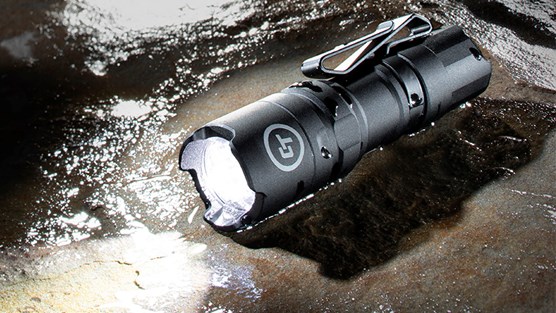
Part of that’s made possible by the aluminum construction. The non-adjustable bezel/lens is tightly sealed, and an O-ring keeps things watertight at the tailcap—where the battery inserts.
5. Foolproof
Navigating a tactical flashlight’s complicated activation procedures during a criminal confrontation isn’t an optimal game plan unless, of course, you’re in the military and paid to practice the procedure every day. And cranking out that cryptic code when your family’s frightened is painful.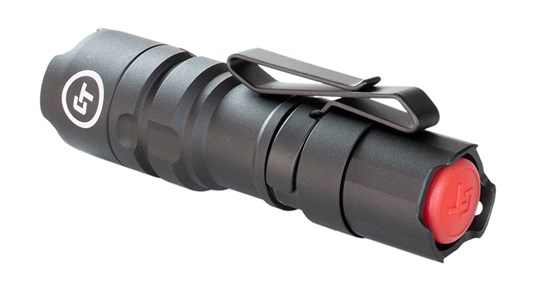
This flashlight, however, activates at full output with pressure on the tailcap switch. If you want it to stay on, simply add pressure until you hear/feel that “click.” Now you can release and bask in the portable limelight. Stand it vertically, bouncing the light off the roof, and savor the romantic glow as you enjoy those MREs after the next hurricane. Another click and it goes off, but do it fast, twice, and you’ve accessed the lower-power, battery-saving mode. One-handed tailcap operation is an advantage for home defenders, but the simplicity applies to everyone.
This year’s National Preparedness Month theme is “Prepared, Not Scared.” The CWL-300 fits the need for battery-powered light sources in that mission well. It’s small, lightweight, reliable, rugged and if disaster strikes when you haven’t made it home yet, even young members of the family can turn on some light without memorizing a Morse code like activation procedure.
MSRP is $69.99, but as this was being written Crimson Trace was running a special offer to pick up a CWL-300 for only $49.99.













